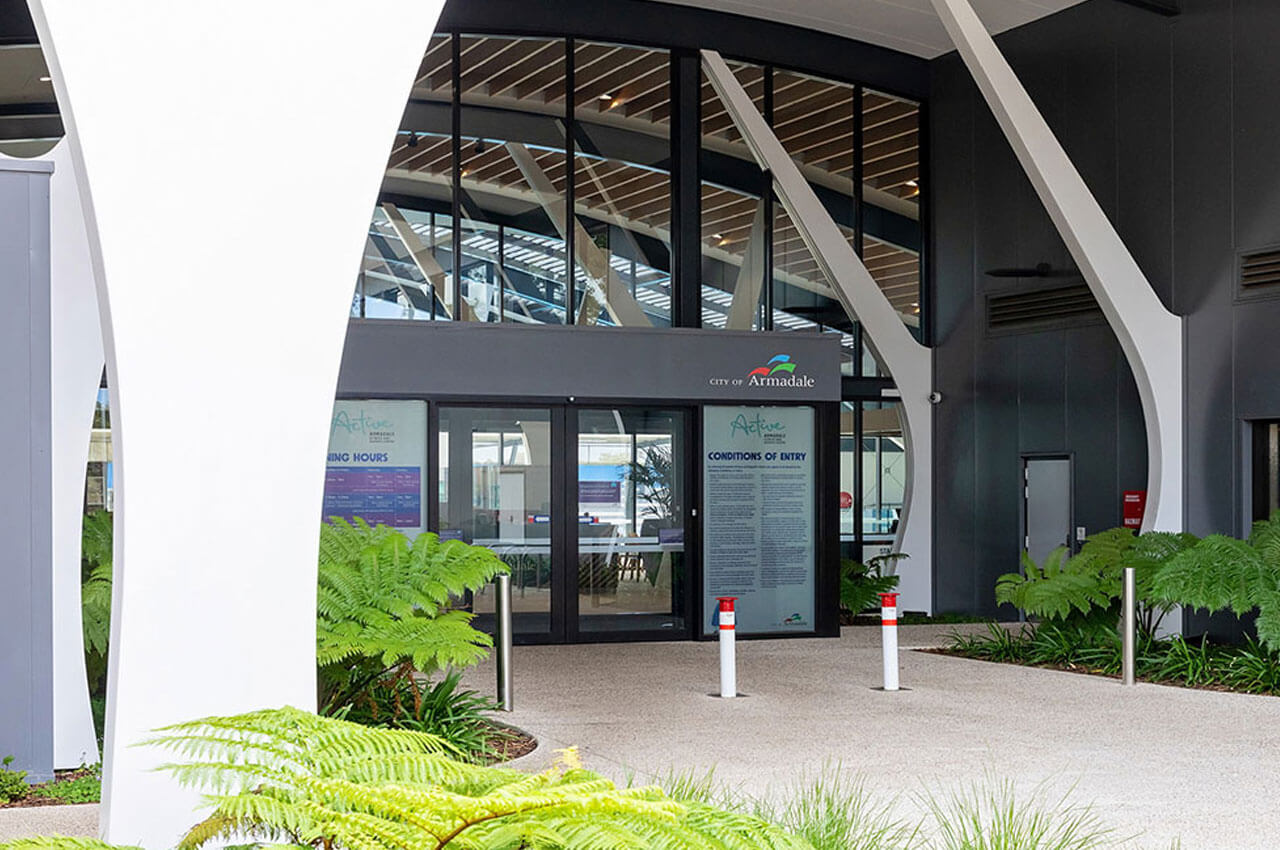
By taking advantage of Perth’s abundant geothermal resources, a new aquatic centre in Armadale is substantially reducing its reliance on natural gas to heat its swimming pools and indoor areas. Sean McGowan reports on the 2021 AIRAH Awards Excellence in Sustainability finalist.
Groundwater from aquifers in the central onshore Perth Basin is one of the area’s most important water resources, contributing 39 per cent of the city’s potable water under the Integrated Water Supply Scheme (IWSS).
One of these aquifers is the deep Yarragadee freshwater aquifer, which covers some 4,885km² of onshore area in the south-west of Western Australia.
As well as providing a robust supply of water even in dry years due to its vast size and limited connection to the surface environment, its location has led to its use as a reliable geothermal heating resource.
The earliest use of the aquifer in this way is said to have occurred at the Perth Zoological Gardens in 1898. A bore was sunk to deliver 40°C groundwater used to heat the newly opened zoo’s reptile house.
In more recent times, the aquifer has provided energy efficient heating to a number of aquatic centres around the city – among them the redevelopment of the Armadale Fitness and Aquatic Centre.
Located in Perth’s south-eastern suburbs, and originally established in the 1980s, Armadale Aquatic Centre has undergone a $26 million upgrade. The aim was to provide the local community with a fully integrated, modern, year-round facility.
Designed by Donovan Payne Architects and built by PS Structures, the centre was reimagined to better cater for the community’s recreation, leisure and social needs.
Officially opening in March 2019, the new facility features geothermally heated indoor pools, an outdoor pool, covered leisure and program pools, as well as wellness suite, gymnasium and other facilities.
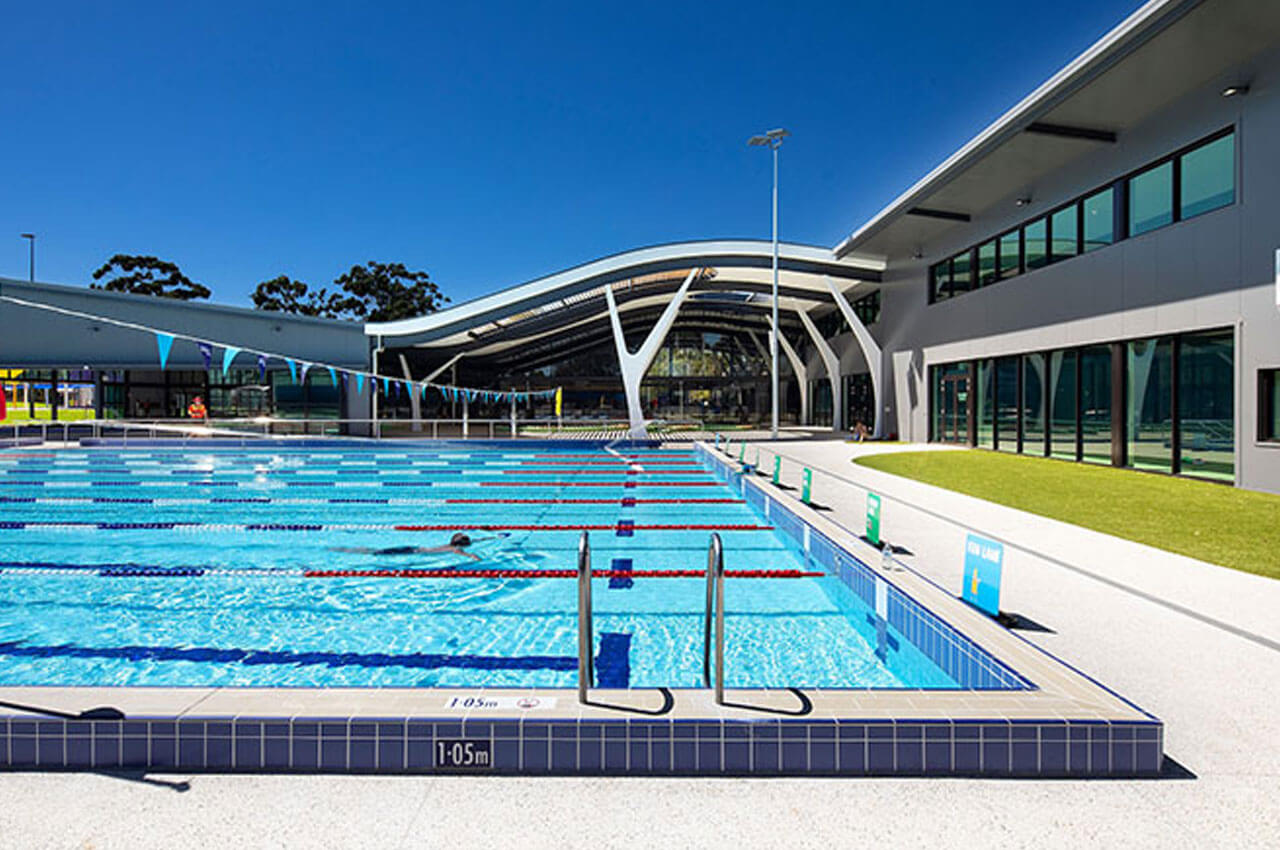

Balancing the system is made more complicated by the different heating requirements of the pools – the outdoor pool, for example, experiences greater heat loss.
Breaking ground
To reduce the new aquatic centre’s reliance on natural gas for the heating of its four swimming pools, a decision was made early on to incorporate a geothermal pool heating system into the overall mechanical services design by WSP. The pool filtration was designed by Norman Disney and Young (NDY).
PDF Engineering was subsequently engaged by PS Structures in the role of commissioning manager, which would include the commissioning of the geothermal heating system.
According to PDF Engineering director Ian Harwood, F.AIRAH, there are several factors that make Perth unique and well-positioned to take advantage of the aquifer’s geothermal properties.
“Perth is largely situated on sand, with little clay or rock, so this makes drilling comparatively easy and reduces the cost,” he says.
“The type of sand also provides good permeability at the water table, meaning that the pumping pressure required is lower. Hydrogeologists look for coarse sand with little silt at the depth they want to draw the water from.”
Balancing the system is made more complicated by the different heating requirements of the pools – the outdoor pool, for example, experiences greater heat loss.
The geothermal system installed at the new Armadale Fitness and Aquatic Centre consists of a submersible pump in a bore located 985m below ground level.
The geothermal bore at the northern end of the site extracts water at a temperature of 46°C. This is then piped via insulated stainless-steel pipework to titanium heat exchangers within the centre’s plantroom.
BMS controls regulate the flow to these heat exchangers to achieve the desired heat transfer into the swimming pools.
Harwood says the heating requirements of the pools vary according to their use and location.
“For example, the outdoor pool experiences greater heat loss on average throughout the year due to the air velocity and evaporation across it, whereas the program pool is located inside with a room temperature of 28°C, so the heat loss is lower.”
The geothermal system provides energy-efficient heating to four swimming pools across the complex, as well as to the air handling plant to provide heating to the air heating coil when required.
Careful commissioning
The geothermal pool heating system was identified as an operational cost-saving measure. Yet Harwood says commissioning the system was critical to the success of the project.
Part of this process called for several controlling factors to be balanced.
For instance, once the required heat is extracted from the geothermal water circuit to maintain pool temperatures, the water is returned at 31.5°C to the aquifer at a return depth of 650m.
The precise temperature of the returned water must be maintained to match the temperature of the groundwater at the point of injection.
Bypass valves and pump speed controls are used to manage the return water temperature and ensure it meets the precise temperatures required. Harwood says these must be commissioned correctly.
“This ensures that the temperature gradients and stratification within the aquifer are not destabilised, nor is the aquifer depleted,” he says, “ensuring sustainability of this natural resource.”
Another challenge during the commissioning process was achieving balance across the entirety of the geothermal and mechanical services system, in order to provide the appropriate heat to all pools concurrently.
Harwood says this becomes “tricky” as each pool requires a different amount of heat, and operates a different size heat exchanger.
The geothermal system provides total heating capacity of 2500kW. It was sized to meet the demands of the centre’s 50m pool (920kW), splash pool (200kw), 25m pool (140kW) and program pool (40kW) as well as provide heating to the air handling plant.
“For example, when one of the larger pools meets the set-point for heating, the system for that pool goes into bypass mode,” Harwood explains.
“This then affects the return water temperature on the geothermal system, and may fall below the call-for-heating threshold, resulting in leaving a smaller pool with insufficient heat.”
It was identified that if the system could allow all pools to achieve the set-point at the same time, the management of the system would be made easier – as well as being more efficient to operate.
Air break
The geothermal bore serving the new Armadale Fitness and Aquatic Centre features an air-break vent to prevent siphoning and suction on the pipework length above the water line.
During the early stages of operation, PDF Engineering identified a leak from the valve and recognised that it had not been set up correctly.
“This could have caused the injection bore to block up quickly as the air when injected allows bacteria to multiply,” says PDF Engineering director James Aps.
Once the issue was identified, the valve was able to be reinstalled and tested, thus avoiding any longer-term issues.
It was also found that the air movement in the pool areas was different to the design allowances, resulting in increased evaporation and heat loss.
To achieve the correct balance across all four of the centre’s swimming pools, PDF Engineering changed the sequence of the heating. Now the smaller pools receive more heat from the geothermal system during the warm-up cycle.
This means the smaller pools are able to achieve set-point at, or just prior to, the larger pools achieving their set-point.
“This change to the fluid balance then allows the larger pool to complete its heat up cycle quickly,” Harwood says.
Energy-efficient
The use of natural gas for swimming pool heating is common in many aquatic centres around the country. Indeed, pool heating often comprises more than 80 per cent of a centre’s energy cost and usage.
But in Perth, where geothermal resources are plentiful and cost-effective to access, many aquatic centre owners and operators are adopting geothermal pool heating in place of gas.
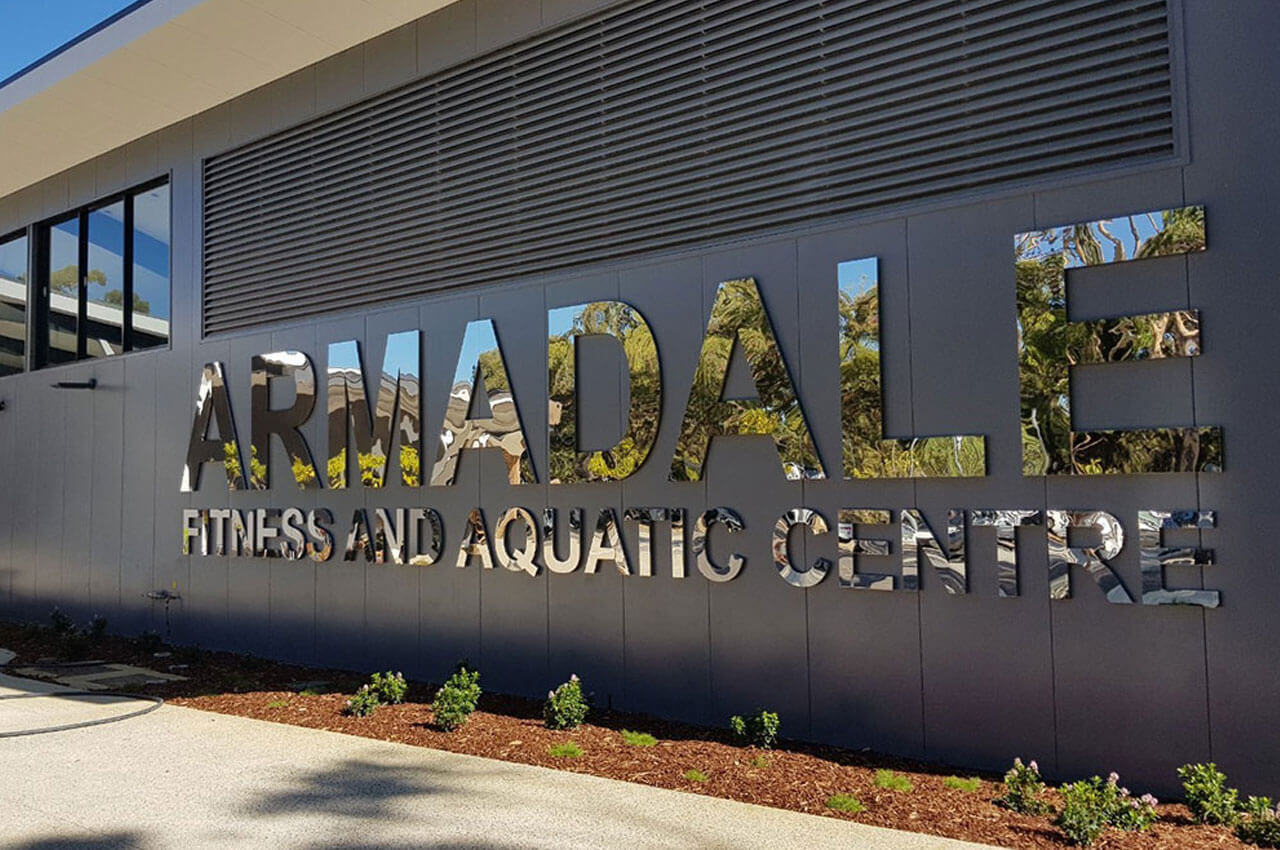

Heating is a huge part of the energy use at aquatic centres – often more than 80 per cent – so solutions such as geothermal are in demand.
The new Armadale Fitness and Aquatic Centre’s geothermal pool heating system is expected to provide a payback of less than six years, with gas heating used only to heat the centre’s spas and for hot water supply.
“It is very cost-efficient compared to using gas to heat the pools,” Harwood says. “However, the overall energy balance is the same. The difference being that the heat is derived from a geothermal source.”
Winning performance
As well as qualifying as a finalist for the AIRAH Awards 2021, the Armadale Fitness and Aquatic Centre (AFAC) was awarded the multi-service business of the year for 2021 by Fitness Australia, the peak association for the Australian fitness industry.
“While community attendance has been incredible,” says Mayor Ruth Butterfield, “AFAC’s biggest success story is one of continual commitment to improvement and going beyond ‘business as usual’. The award not only recognises AFAC’s high standards and professionalism, but also the multiple ways residents have been encouraged to be active, making a real and positive impact on the health and wellbeing of our community.”
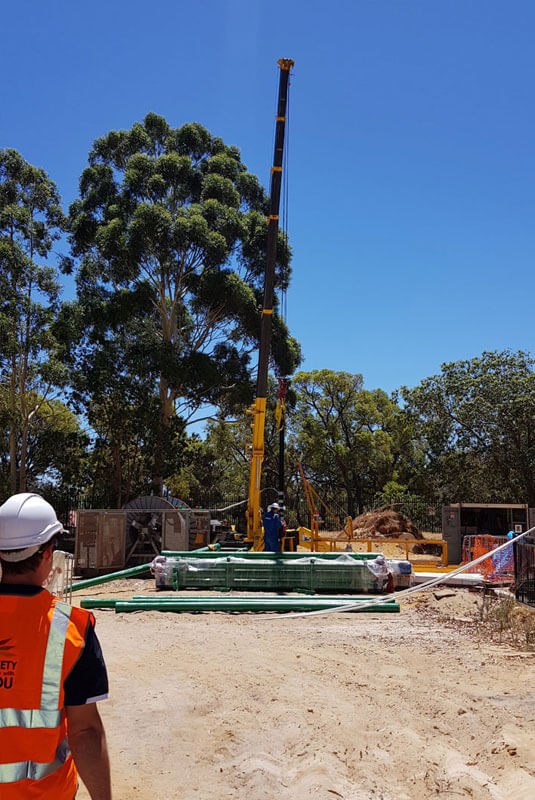

The bore hole travels down almost a kilometre to the Yarragadee freshwater aquifer.
Real-world savings are yet to be calculated at Armadale. Early indications, however, are that gas consumption is significantly lower than it would otherwise have been if used to heat the swimming pools.
Of course, commissioning is a critical component of optimising energy efficiency.
“While commissioning can be said to be key on any large project,” says Harwood, “it is especially true of a geothermal pool heating project where there are many sub-trades that need to work together to ensure the project and all of its systems work correctly.”
The new Armadale Fitness and Aquatic Centre is a finalist in the Excellence in Sustainability category for the 2021 AIRAH Awards, with winners announced this month.
Q&A with Prof. Hui Tong Chua
Ecolibrium broke bread with the head of department for the University of Western Australia’s Department of Chemical Engineering.
Ecolibrium: When does geothermal heating and cooling work well?
Prof. Hui Tong Chua: I will answer heating and cooling separately. I understand that heating is in the context of swimming pool heating. I assume cooling refers to (i) residential cooling and (ii) district cooling.
Geothermal heating works really well when it is needed as a source of baseload renewable energy. In addition to being baseload, it also demands minimal aboveground real estate, thereby making it ideal for suburban applications.
In particular, for tepid heating applications, such as swimming pool applications, the availability of expansive aquifers with a good geothermal temperature gradient will make for a compelling proposition. For such applications, the depth of boreholes is approximately 1km in the Perth metropolitan area.
Geothermal cooling can be considered for (i) residential cooling and (ii) district cooling.
For residential cooling applications in the context of ground-source heat pumps, it will be compelling if the ground-source heat pump is coupled to borehole irrigation of gardens or lawns. Again, access to shallow and expansive aquifers will make for an attractive option for such cooling applications. In this context, the payback period compared to an air-source heat pump can be from near immediate to up to four years.
For district cooling applications, one has to access geothermal asset at a depth of approximately 4–5km so as to harness ca. 100°C water aboveground to power an absorption chiller, which will be cooled by cooling towers.
What have been the most compelling things you have observed in your three-year study of geothermal pools?
That geothermal energy is baseload and does not occupy expensive real estate. This is unrivalled in the context of renewable energy.
What are the barriers to installation – are upfront costs prohibitive?
Upfront costs can be substantial. For a leisure centre, the payback period is about seven to 10 years. But there are also the multiple ESG benefits to reap from such a project, which are just as important for stakeholders.
What can go wrong?
The most frequent issue that I notice is that the geothermal heating capacity for an application tends to be undersized for various reasons. This can be somewhat discouraging, because at the end a project still has to rely on gas-fired boilers in the wintry seasons.
Are we likely to see more of these types of installations in the years to come?
I am sure this will be an ongoing and a growing trend, especially with greater public awareness and with the engineering sector becomes better skilled in harnessing this source of baseload and renewable energy.
Any other observations that you would care to share?
Geothermal energy is a very attractive form of baseload energy that will complement the repertoire of renewable energies on offer in Australia. As the engineering sector becomes better skilled and is able to access ever hotter forms of geothermal energy, one could eventually realise the cascaded use of this reliable form of energy for green electricity and hydrogen production, desalination and district cooling.
Lessons from the consultant
Commissioning manager PDF Engineering offers several lessons from the new Armadale Fitness and Aquatic Centre geothermal project.
- The drivers of this type of project – the project structure, programming and contractor engagements – are different to a traditional construction project. It’s important to know and understand the differences. Experience here counts.
- Commissioning management on a geothermal project is key to a happy client.
Adjustment
Following project completion, PDF Engineering identified that the return water temperature to the aquifer was too high.
By reducing the pump speed on the geothermal pump while increasing the flow on the pool side of the heat exchangers, the differentials were changed, and the correct return water temperature was able to be achieved.
PDF Engineering also worked with the client in the 12-month tuning period post-completion to help them better understand the impact certain actions in the centre could have on the geothermal pool heating system.
“For example, we found that a backwash of filters could cause temperatures to drop by 1–2°C, and recovery of the system could take a couple of days,” says PDF’s Ian Harwood, F.AIRAH.
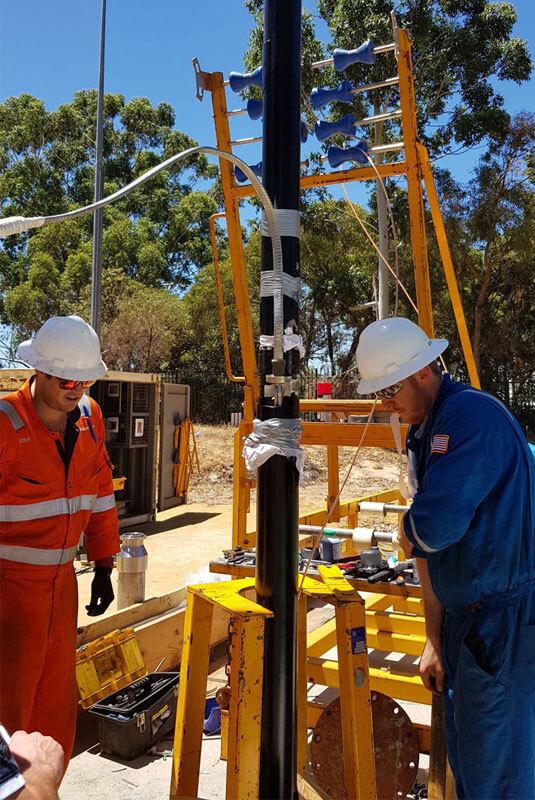

Drilling is comparatively easy and less costly than in other locations thanks to the sandy soil Perth is built on.
Project at a glance
The personal
Architect: Donovan Payne
Builder: PS Structures
Client: City of Armadale
Consulting engineers: NDY and WSP
Commissioning manager: PDF Engineering
Hydrogeological and environmental consultant: Rockwater
Mechanical services contractor: Engie
The equipment
BMS: Reliable Controls
Chiller: York
Duct: Kingspan
Geothermal pump: Schlumberger Australia
Heat exchangers: WA Heat Exchangers
Pool pumps: KSB
(Source: PDF Engineering)
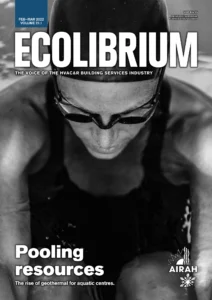
This article appears in Ecolibrium’s February-March 2022 edition
View the archive of previous editions
Latest edition
See everything from the latest edition of Ecolibrium, AIRAH’s official journal.




